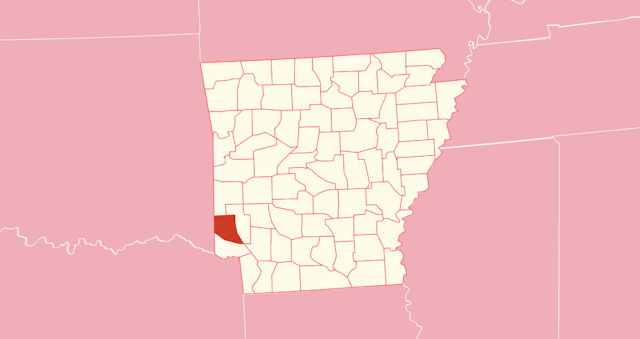Rehabs in Sevier
Sevier County is located in the US state of Arkansas. Its administrative center is in De Queen. According to the 2010 US census, the region had a population of 17,058. On 2020 November 3, residents of Sevier County voted in favor of alcohol sales by 67,31% (3,499 residents) to 32,69% (1,699).
Nowadays, America suffers from terrible outcomes of the substance abuse epidemic. In other words, according to the report of the Centers for Disease Control, more than 100,000 Americans died from drug overdoses between 2020 to 2021. Like the whole of America, Sevier is also facing modern addiction challenges. As of the Sevier County Opioid Dashboard, in 2021 the overdose rate in this province was 6,34.
Healing from the addiction without professional support could be difficult and even risky. That is to say, during the initial therapy people may develop less tolerance towards the drug they used to consume. So, if they relapse, the chance of overdosing or dying will become higher.
There is only one rehab in Sevier County, however, you still will be able to find help nearby. Read the article to get to know the details of addiction treatment and find a plan that best matches your recovery goals.
Substance Abuse Evaluation
Before you begin your recovery, you should conduct a thorough assessment of your current health situation. The evaluation procedure takes place between a person and a counselor. The aim of it is to determine if there is a problem with drug and alcohol use or not. Hence, at the end of the assessment, the professional will classify your substance use as dependence, abuse, or social use. In case of dependence, the person should cut off the use of excessive amounts of drugs and alcohol. Moreover, the counselor will determine the diagnosis and recommend an individual recovery plan.
Available Treatment Options
People who are looking for drug and alcohol rehabs in Sevier county can be disappointed, as this region has limited options for addiction treatment. However, search for the rehabs nearby, and you will get access to substance abuse evaluation services, detox, inpatient and outpatient programs, aftercare, and more. So, the first step towards recovery usually starts with detox under medical control and follows up with intensive therapy at the hub.
Detox
Detoxification is for clearing the body of toxic substances. So, the aim of this procedure is to safely manage withdrawal symptoms when a person stops taking drugs or alcohol. Everyone passes this procedure uniquely. In other words, the type of substance and length of the consumption determines which kind of withdrawal symptoms may arise during detox.
Detox at home is not a good choice, as it can be dangerous and even deadly. Medical support and monitoring are to prevent dangerous complications.
Inpatient Program
Inpatient rehab offers the highest level of treatment. It also provides its patients with a controlled environment and around-the-clock medical attention and emotional support.
The average length of the inpatient or residential program is 30 days, however, centers may offer longer programs (from 60 to 90 days and even longer). During the whole course, a patient should live at the hub. The main factors that determine the length of the stay are co-occurring mental health conditions and previous rehab experience.
Outpatient
People who are motivated to stop using drugs and alcohol and have mild levels of dependence may be enrolled in the outpatient plan. The latter offers flexibility that will work around their schedules. This schedule allows the patients to live at home and continue with their daily responsibilities. The main elements of this type are counseling, education, and support from peers and friends.
Costs and Payment Options
Several factors starting from medical care to amenities determine the cost of rehab. Detox costs from $1,000 to $1,500. For a stay at a residential center, one may pay from $6,000 to $60,000. The average cost of the outpatient hub ranges between $5,000 to $10,000.
Insurance is a common way to cover treatment expenses. There are private (Cigna, Humana, Blue Cross Blue Shield, UnitedHealthcare, Aetna, etc.) and public health insurance plans (Medicaid, Medicare, Tricare) available.
Most rehabs offer financial aid, accept insurance or have financing options. People who don’t have insurance may look for a free or low-income center. A person may also look through such financing options as sliding fee scales, grants, scholarships, medical loans, and financial assistance from friends and family.

